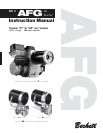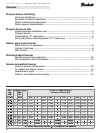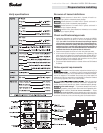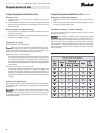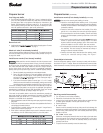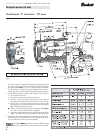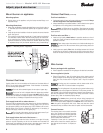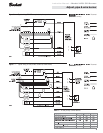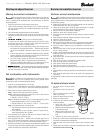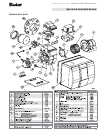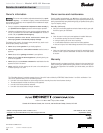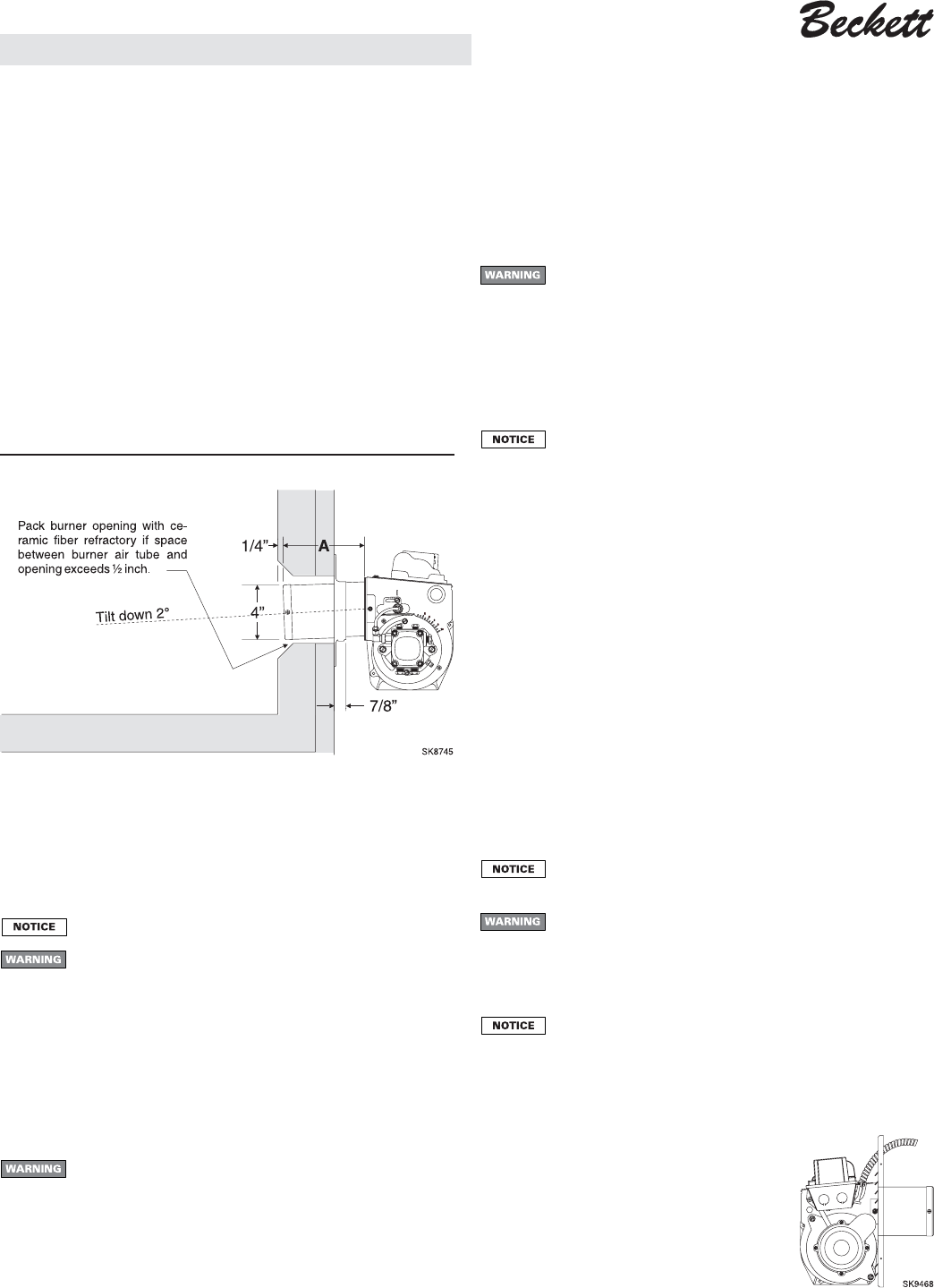
Instruction Manual – Model AFG Oil Burner
8
Burner packaged with appliance
• Refer to appliance manufacturer’s wiring diagram for electrical connections.
Burner applied at jobsite
• Refer to Figures 6 and 7, page 9, for typical burner wiring, showing cad cell
primary controls. Burner wiring may vary, depending on primary control ac-
tually used. The oil valve shown in Figures 6 and 7 may be an optional
feature.
All wiring must be in accordance with the latest revision of Na-
tional Electric Code NFPA 70 and local codes and regulations.
The wiring diagrams in this manual are for
general reference only
,
and apply only to burners equipped with R8184G or R7184 primary controls. For
other controls, refer to the control manufacturer’s literature or the diagrams sup-
plied with the appliance. Failure to apply correct wiring could result in severe
personal injury, death or substantial property damage.
The R7184 primary control with valve-on delay (
prepurge
) and
burner motor-off delay (
postpurge
), shown in Figure 7, page 9, requires a con-
stant 120 VAC power source supplied to the
BLACK wire on the control. The
RED wire goes to the appliance limit circuit. Please note that other control
manufacturers may use different wire colors for power and limit connections.
Wire burner
Figure 5 — Mounting burner in appliance
Mounting options
• Bolt the burner to the appliance using the factory-mounted flange or an
adjustable flange.
Mounting dimensions
• When using the Beckett universal adjustable flange, mount the air tube at a
2° downward pitch unless otherwise specified by the appliance manufac-
turer.
• Verify that the air tube installed on the burner provides the correct insertion
depth. See Figure 5.
• The end of the air tube should normally be ¼" back from the inside wall of
the combustion chamber. Never allow the leading edge of the head assem-
bly to extend into the chamber, unless otherwise specified by the heating
appliance manufacturer. Carefully measure the insertion depth when using
an adjustable flange. Verify the insertion depth when using a welded flange.
Mount burner on appliance
Connect fuel lines
Adjust, pipe & wire burner
Carefully follow the fuel unit manufacturer’s literature and the latest edition of
NFPA 31 for oil supply system specifications. If this information is unavailable,
use the following basic guidelines.
Fuel units with automatic bypass do not require a bypass plug.
The burner fuel unit is shipped without the bypass plug installed.
You must install this plug on two-pipe oil systems.
DO NOT install the plug in
the fuel unit if connected to a one-pipe oil system. Failure to comply could cause
fuel unit seal failure, oil leakage and potential fire and injury hazard.
Fuel supply level with or above burner —
The burner may be equipped with a single-stage fuel unit for these installations.
Connect the fuel supply to the burner with a single supply line if you want a
one-pipe system (making sure the bypass plug is NOT installed in the fuel unit.)
Manual venting of the fuel unit is required on initial start-up. If connecting a
two-pipe fuel supply, install the fuel unit bypass plug.
The oil supply inlet pressure to the fuel unit cannot exceed 3 psi.
Install a pressure-limiting device in accordance with NFPA 31.
Fuel supply below the level of the burner —
When the fuel supply is below the level of the burner, a two-pipe fuel supply
system is required. Depending on the fuel line diameter and horizontal and
vertical length, the installation may also require a two-stage pump. Consult the
fuel unit manufacturer's literature for lift and vacuum capability.
Fuel line installation —
• Continuous lengths of heavy wall copper tubing are recommended. Always
use flare fittings. Never use compression fittings.
• Always install fittings in accessible locations. Fuel lines should not run against
the appliance or the ceiling joists (to avoid vibration noise).
Never use Teflon tape on any fuel fitting. Tape fragments can lodge
in fuel line components and fuel unit, damaging the equipment and preventing
proper operation.
Fuel line valve and filter —
• Install two high quality shutoff valves in accessible locations on the oil
supply line. Locate one close to the tank and the other close to the burner,
upstream of the filter.
Some states require these valves to be fusible-handle design for
protection in the event of fire. We recommend this as good industry practice for
all installations.
• Install a generous capacity filter inside the building between the fuel tank
shutoff valve and the burner, locating both the filter and the valve close to
the burner for ease of servicing. Filter should be rated for 50 microns or less.
Connect fuel lines (continued)
Covered burners
The mounting plate is not a conduit connection
point. Pass conduit and attached connector
through the opening in the mounting plate (see
illustration at right) and attach it directly to the
burner-mounted 4x4 electrical box.
If attaching a burner cover to a previously in-
stalled burner, attach the mounting plate and
then slide the conduit into the "J" shaped con-
duit slot.



